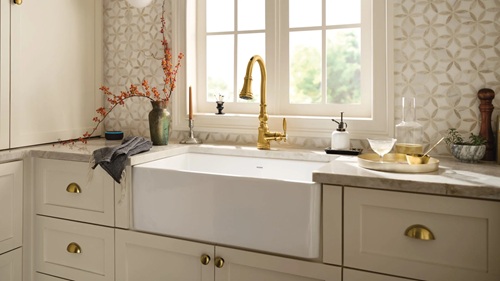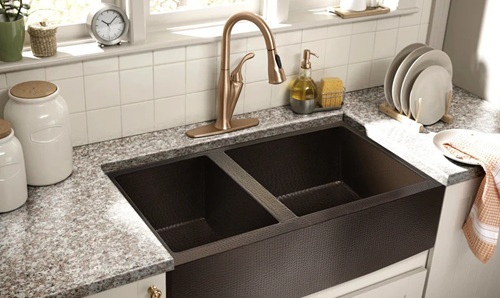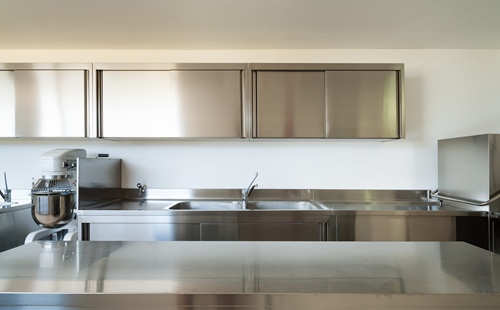When it comes to choosing the perfect sink for your kitchen, the material matters just as much as the size or style. One of the most popular choices in recent years, especially for farmhouse-style and high-end kitchens, is the fireclay sink. Known for its elegant appearance and rugged durability, a fireclay sink offers both aesthetics and function. However, like any home improvement product, it comes with its own set of advantages and drawbacks.
In this article, we take a detailed look at the pros and cons of fireclay sinks so you can make an informed decision for your kitchen renovation or new build.
What Is a Fireclay Sink?

A fireclay sink is made from clay and glaze, which are molded into shape and fired at extremely high temperatures—often over 1,600°F (870°C). This intense firing process fuses the glaze to the clay, creating a dense, durable, and nonporous material. Fireclay is commonly used to make apron-front (farmhouse) sinks, although it is available in a variety of other styles and configurations.
Pros of Fireclay Sinks
1. Classic and Timeless Aesthetic
One of the standout features of fireclay sinks is their clean, glossy finish and traditional appearance. They often feature a smooth surface and rounded edges, which complement a wide range of kitchen styles—from rustic farmhouses to contemporary urban kitchens. The white or off-white finish is especially popular, though some manufacturers offer other colors.
2. High Durability
Thanks to the extreme temperatures used during production, fireclay sinks are extremely hard and dense. They resist chipping, cracking, and warping better than many other materials, including porcelain and enameled cast iron. This makes them suitable for busy kitchens that require long-lasting fixtures.
3. Nonporous Surface
The nonporous nature of fireclay makes it resistant to staining, odors, and bacteria. Spills from coffee, wine, or acidic foods can usually be wiped clean without leaving permanent marks. This quality also helps the sink retain its color and sheen over time.
4. Heat and Scratch Resistance
Fireclay sinks can withstand high temperatures, meaning you can place hot pots and pans in the sink without fear of damage. They’re also fairly scratch-resistant—an important benefit when washing heavy cookware or sharp utensils.
5. Easy to Clean
With its glazed, smooth finish, cleaning a fireclay sink is relatively simple. Soap, warm water, and a soft cloth or sponge are usually enough to maintain its appearance. Unlike some materials, it doesn’t require specialized cleaners or sealants.
6. Sound Insulation
Fireclay sinks are thicker and denser than stainless steel sinks, which naturally reduces noise when water is running or dishes are being washed. This sound-dampening quality adds comfort to daily kitchen tasks.
Cons of Fireclay Sinks
1. Heavier Than Standard Sinks
One of the major downsides of fireclay sinks is their weight. A typical fireclay sink can weigh between 80 to 120 pounds or more, requiring additional support in the cabinetry below. This can lead to higher installation costs and might not be suitable for all kitchen layouts without structural reinforcement.
2. High Upfront Cost
Fireclay sinks are often more expensive than stainless steel or composite sinks. Prices can range from $400 to over $1,000, depending on brand, size, and style. Add in the cost of reinforced cabinetry and professional installation, and it becomes a premium-priced product.
3. Limited Color and Style Options
While white and off-white are classic and elegant, fireclay sinks come in fewer color choices compared to composite or metal sinks. This could be a limitation for homeowners seeking bold colors or ultra-modern designs. Additionally, most fireclay sinks are apron-front style, which may not fit all kitchen aesthetics.
4. Potential for Hairline Cracks or Crazing
Although rare, fireclay sinks can develop hairline cracks in the glaze over time, especially if subjected to sudden extreme temperature changes. These cracks, known as crazing, are usually cosmetic and do not affect function, but they can collect dirt and may detract from the sink’s appearance.
5. Risk of Damage from Heavy Impacts
Despite being highly durable, fireclay sinks can still chip or crack if struck with enough force, such as dropping a cast iron pan directly onto the surface. While this risk exists with most sinks, repairs to a fireclay sink are not always easy or seamless.
6. Complex Installation Process
Due to their weight and design (especially apron-front models), fireclay sinks often require custom cabinetry, professional fitting, and support framing. Unlike drop-in or undermount stainless sinks, these cannot be easily retrofitted into existing kitchen counters.
Tips for Maintaining a Fireclay Sink
To get the most out of your fireclay sink:
- Use a protective grid at the bottom to prevent chips and scratches.
- Clean regularly with non-abrasive cleaners.
- Avoid sudden temperature shocks (like pouring boiling water directly into an empty, cold sink).
- Rinse and dry the sink after each use to maintain shine and prevent buildup.
Is a Fireclay Sink Right for You?
A fireclay sink is ideal for homeowners who:
- Value aesthetic charm and timeless style
- Need a durable, long-lasting kitchen fixture
- Are willing to invest in high-quality materials and professional installation
- Prefer low-maintenance surfaces
However, it may not be the best choice for those with tight budgets, minimal cabinet support, or modern design preferences that require sleeker, more color-diverse options.
Conclusion
The fireclay sink is a blend of style, strength, and function, offering a luxurious feel that elevates any kitchen. With proper care and thoughtful installation, it can serve as a beautiful, durable centerpiece for years. But as with any major purchase, weighing the pros and cons carefully will help you determine whether this classic sink is the right match for your kitchen’s needs, style, and budget.

